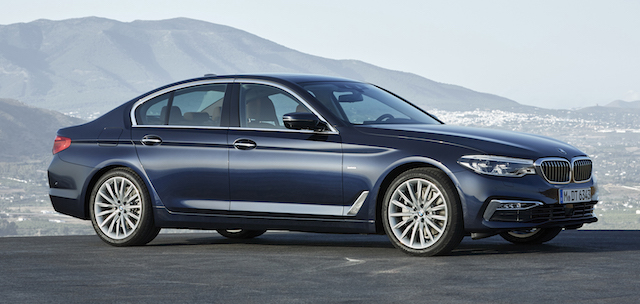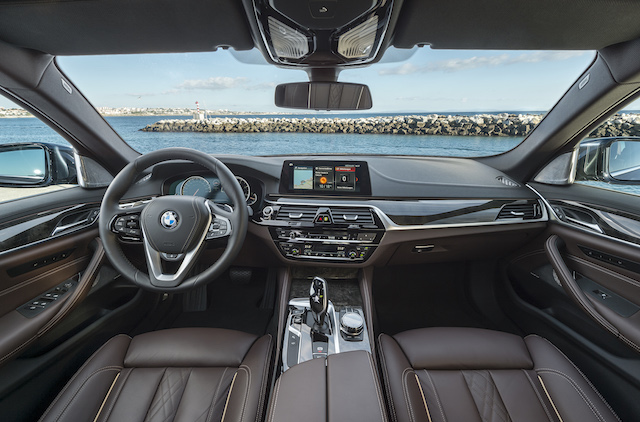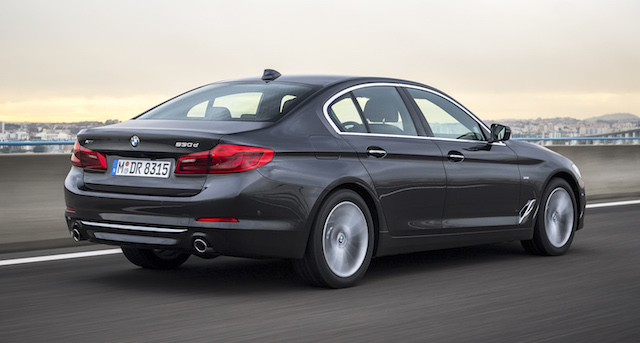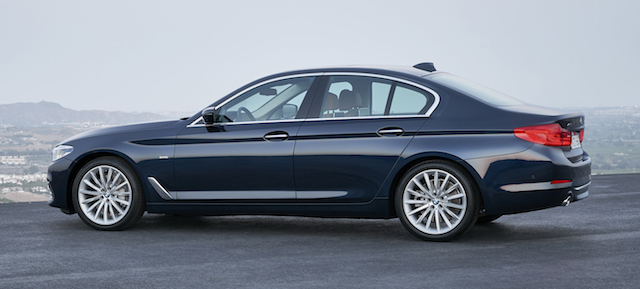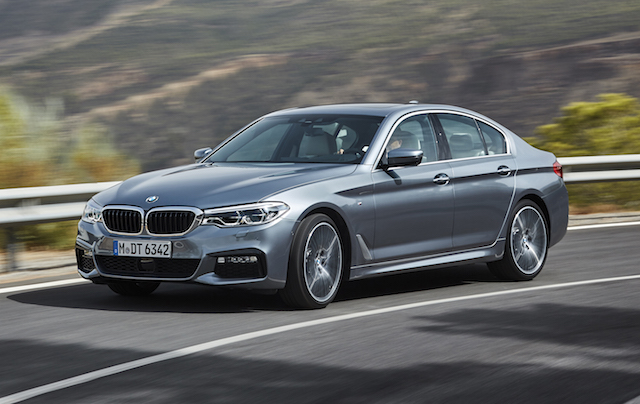
It was in the late 1990s when a BMW executive exclaimed: “Diesels! We are not going to bring diesels into New Zealand.” It was in Spain, at the launch of the then 3-Series range. The standout model among a handful of peaky petrols was a lone diesel, the 320d.
Fast forward over a decade and a half and BMW is doing something that once would have caused bad language in the NZ boardroom: it will launch the new 5-Series sedan range in February with a diesel, the 520d.
The second offering in the three-car line-up is also a diesel, the 530d. The lone petrol model is the premium 540i. Later next year the petrol-electric hybrid 530e will land here.
Once, BMW might have waited for the appropriate entry-level petrol model. Not any more. BMW does big diesel sales – has done for many years – as do German rivals Mercedes-Benz and Audi.
The new 5-Series line-up is available for order now and kicks off in price at $99,900 for the diesel 520d and jumps to $133,900 for the diesel 530d. The premium model is the petrol 540i, at $142,900. The price of the hybrid 530e is not yet known.
The carmaker’s NZ managing director, Florian Renndorfer, said the seventh-generation 5-Series gets a high level of connectivity and driver assistance technology, along with an “unparalleled driving experience”.
“A wealth of assistance systems are on hand to offer the driver unbeatable support – not only at critical moments but also in less demanding situations at the wheel, such as traffic jams and slow-moving traffic,” he said
All three models have as standard the so-called Driving Assistant Plus package, which utilises a suite of radar and camera sensor systems and includes a semi-autonomous mode to help the driver stay on the straight and narrow.
There is also the latest head-up system, a full colour display with a projection surface 70 per cent larger than before. It shows traffic signs, telephone listings, radio stations, music tracks, navigation instructions and warnings from the assistance systems.
The new 5-Series is a mix of aluminium and high-strength steels, architecture which contributes to it being stronger than the outgoing model but around 100kg lighter. It also has a lower centre of gravity and maintains a 50:50 weight distribution, says BMW.
The four-cylinder turbodiesel in the 520d delivers 140kW/400Nm; the six-cylinder diesel in the 530d generates 195kW/620Nm; the straight-six petrol unit in the 540i is good for 250kW/450Nm. Claimed fuel use is 4.3 litres/100km and 114gr/km for the 520d; 4.7 litres/100km and 124gr/km for the 530d; 6.7-litres/100km and 154gr/km for the 540i.
Standard specification in the 520d includes 18-inch alloy wheels, leather ‘Dakota’ upholstery with heated front seats, LED headlights, parking sensors, and a 360-degree camera.
The BMW 530d adds a Sport Line package, including 19-inch alloys wheels and sports front seats. It also gets anti-dazzle headlights, an upgraded HarmanKardon audio system, wireless charging for mobile phones and a gesture control system.
The premium 540i gets all of the above plus a standard M Sport package, including exterior styling enhancements, Dynamic Damper control, 20-inch alloy wheels, and an improved brake package.
- BMW looks like it will lose its title as the world’s biggest-selling luxury automotive brand this year, a position it has held since 2005. Mercedes-Benz reported worldwide sales at the end of November of 1.89 million cars and SUVs, a monthly average in 2016 of 171,800 units. A similarly heathy December would mean it would surpass two million annual sales for the first time. BMW this year has been averaging around 165,000 sales a month and Audi 156,000. Mercedes-Benz targeted 2020 as the year it would become the luxury leader. Daimler AG chairman Dieter Zetsche was reported this week as saying: “We will achieve it this year, four years ahead of time.” Mercedes-Benz worldwide sales are up 12 percent; BMW’s are up 5.5 per cent and Audi’s 4 per cent. In the Asia Pacific (including NZ and Australia), Mercedes-Benz is up 20 per cent.

